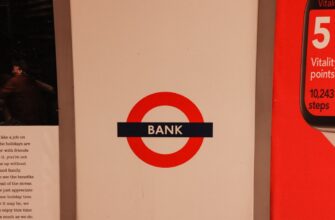- What Time Bitcoin Halving Countdown: Track the Critical Crypto Event
- What is Bitcoin Halving?
- Why the Halving Countdown Timing Matters
- How to Track the Bitcoin Halving Countdown
- Historical Halvings: Lessons from Past Countdowns
- What to Expect in the 2024 Bitcoin Halving
- Frequently Asked Questions
- What is the exact time of the next Bitcoin halving?
- Why does Bitcoin halving happen at a block height, not a fixed date?
- How does the halving affect Bitcoin’s price?
- Can the halving be delayed or accelerated?
- What should I do before the halving?
What Time Bitcoin Halving Countdown: Track the Critical Crypto Event
The Bitcoin halving countdown isn’t just a timer—it’s a pivotal moment that reshapes the crypto landscape. As the event approaches, miners, investors, and enthusiasts worldwide fixate on one question: what time will the Bitcoin halving occur? This guide demystifies the countdown, explains why timing matters, and shows how to track it accurately while exploring its market-shaking implications.
What is Bitcoin Halving?
Bitcoin halving is a pre-programmed event in Bitcoin’s code that slashes mining rewards by 50% every 210,000 blocks (roughly four years). Designed by Satoshi Nakamoto, it enforces scarcity by:
- Capping total Bitcoin supply at 21 million coins
- Controlling inflation through predictable emission reductions
- Rewarding early adopters while sustaining long-term value
With three halvings completed (2012, 2016, 2020), the next is projected around April 2024, cutting rewards from 6.25 to 3.125 BTC per block.
Why the Halving Countdown Timing Matters
Pinpointing the exact time of the Bitcoin halving countdown is crucial for strategic planning. Here’s why:
- Market Volatility: Historical data shows significant price fluctuations in the 90 days pre- and post-halving.
- Miner Economics Miners optimize operations based on reward reduction timelines to maintain profitability.
- Investment Windows: Traders leverage countdown milestones for entry/exit positions.
- Network Security: Hash rate adjustments begin weeks before the event, affecting blockchain stability.
How to Track the Bitcoin Halving Countdown
Use these real-time resources to monitor the countdown:
- Blockchain Explorers: Sites like Blockchain.com or BTC.com display current block height and projected halving dates.
- Dedicated Countdown Timers: Platforms like CoinGecko or Binance feature live trackers adjusting for block discovery speed.
- Mining Pools: F2Pool and ViaBTC provide miner-focused halving dashboards.
- Mobile Apps: Crypto data apps (e.g., Delta, CoinStats) send push notifications as the event nears.
Pro Tip: Timers estimate dates based on 10-minute block intervals, but actual times vary with network hash rate.
Historical Halvings: Lessons from Past Countdowns
Previous halvings reveal patterns tied to countdown timing:
- 2012 Halving: Rewards fell from 50 to 25 BTC. Bitcoin surged 8,000% in the following year.
- 2016 Halving: Reduction to 12.5 BTC preceded a 300% price increase over 18 months.
- 2020 Halving: Drop to 6.25 BTC ignited a bull run to $69,000 despite pandemic uncertainty.
Each event saw accelerated investor interest as countdowns entered the 30-day window.
What to Expect in the 2024 Bitcoin Halving
As the countdown ticks toward April 2024, anticipate:
- Increased media coverage and retail investor activity
- Potential hash rate volatility as miners upgrade equipment
- Price consolidation phases followed by possible bullish momentum
- Enhanced focus on Bitcoin ETFs and institutional adoption
Analysts project long-term price targets between $100,000-$200,000 by 2025 based on post-halving scarcity effects.
Frequently Asked Questions
What is the exact time of the next Bitcoin halving?
The halving occurs at block height 840,000, projected around April 20, 2024. Exact timing depends on block discovery speed—faster mining accelerates the date, while slower hashrate delays it. Track live countdowns for daily updates.
Why does Bitcoin halving happen at a block height, not a fixed date?
Bitcoin’s decentralized nature means block intervals vary with network participation. The 210,000-block rule ensures consistent issuance reductions regardless of mining activity, maintaining predictable scarcity.
How does the halving affect Bitcoin’s price?
Historically, reduced supply post-halving creates upward pressure. However, prices react to multiple factors—including macroeconomic trends and adoption—making short-term predictions unreliable. Long-term appreciation typically follows due to increased scarcity.
Can the halving be delayed or accelerated?
Yes. If average block time falls below 10 minutes (e.g., during hash rate spikes), halving occurs earlier. Conversely, mining slowdowns delay it. The protocol self-adjusts difficulty every 2,016 blocks to stabilize timing.
What should I do before the halving?
Review your strategy: miners should upgrade efficient hardware, traders might dollar-cost average, and long-term holders can maintain positions. Always prioritize security—scams surge during hype cycles.
As the clock ticks toward Bitcoin’s next supply shock, understanding the halving countdown transforms uncertainty into opportunity. Bookmark live trackers, analyze historical patterns, and let precise timing guide your crypto journey.








